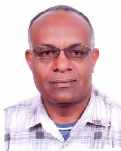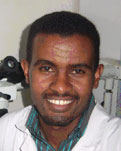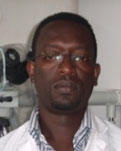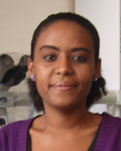


Kala Azar in Ethiopia: Drivers of transmission, human populations & Parasite geneticsVL is distributed throughout the lowlands of Ethiopia with varying degrees of endemicity (Hailu & Frommel, 1993; Ayele and Ali, 1984; Hailu et al., 1996; Hailu et al., 2006). Important endemic foci include the Humera and Metema plains in northwest (Fuller et al., 1976b; Hailu & Frommel, 1993); and the Segen and Woitu river valleys in southwest (Hailu & Frommel, 1993; Hailu et al., 1996; Fuller et al., 1979).The Segen river and the adjoining Woitu river valleys are areas that exhibit a huge micro-focal variation in burden of VL and L. donovani infection. The local variations in the burden of VL in the valleys are associated with a unique human adaptation and settlement patterns of the affected communities and the very focal nature of sand fly habitats. An in-depth epidemiological study of VL in one of the villages at the escarpments of the Segen valley (Aba-Roba focus) showed that VL is preponderant in males, and affects mainly children and young adults (Ali and Ashford, 1994). The Metema and Humera plains are recognized as the most important foci of VL in Ethiopia. The first reported cases of VL in north western Ethiopia come from the works of Fuller et al. (1976a), Tekle et al. (1970), Ashford et al. (1973), Mengesha and Abuhoy (1978) and Maru (1979). Presently, VL in the region has become a major public health problem affecting major settlements and seasonal migrant laborers seeking employment in the large cash crop farms. In these areas, the risk of HIV co-infection is high. Previously, Ashford et al. (1973) reported a few cases of VL from the highlands of northwest Ethiopia in a place called Belessa. Clinical records from Gondar University Hospital in northwest Ethiopia, have revealed VL in a child of age 7 living in the town of Gondar located at altitude of 2130 m. These observations were indications for the possibility that VL could intrude into the highlands - as witnessed by the recent outbreak in Lake Tana basin/Libo-Kemkem District (Alvar et al., 2007; Gebre-Michael et al., 2007). The vast plains of Omo River and the
lowlands of south and southeast Ethiopia are areas with significant
burden of the disease. The lower Omo plains are among the areas where
the first reports of VL in Ethiopia were made (Coles et al., 1942;
Andersen, 1943); later confirmed by extensive surveys of Fuller et al.
(1974, 1979), and Hailu et al. (1996). The areas represent sporadic
endemicity characterized by widespread infection and low incidence of
active VL affecting mainly children. References:Ali A. (1997) Ethiop Med J, 35, 225 - 33.Ali A and RW Ashford (1994) Ann Trop Med & Parasitol, 88, 289 - 93. Ali A., Berhe N., Mengistu G. and Gebre-Michael T. (2002) EJHD, 16, 157 - 63. Alvar J, Bashaye S, Argaw D, et al. (2007) Am J Trop Med & Hyg, 77, 275 – 82. Andersen T.F. (1943) East Afr Med J, 20, 172 - 5. Ashford R. W., Hutchinson M. P. and Bray R. S. (1973) Ethiop Med J, 11, 259 - 65. Ayele T. and Ali A. (1984) Am J Trop Med & Hyg, 33, 548 – 52 Cles A.C.E., Consgrove P.C. and Robinson G. (1942) Trans Roy Soc Trop Med & Hyg, 36, 25 - 34. Fuller G.K., Lemma A., Haile T. and Atwood C.L. (1976a) Ann Trop Med & Parasitol, 70, 148 - 63. Fuller G.K., Desole G. and Lemma A. (1976b) Ethiop Med J, 14, 87 - 94. Fuller G.K., Lemma A., and Gemetchu T. (1974) Trans Roy Soc Trop Med & Hyg, 68, 166. Fuller G.K., Lemma A., Haile T. and Gemeda N. (1979) Ann Trop Med & Parasitol, 73, 417 - 31. Gebre-Michael T., Balkew M., Alamirew T. et al. (2007) Ann Trop Med & Parasitol, 101, 367 70. Gemetchu T. and Fuller G. K. (1976) Ethiop Med J, 14, 81 - 5. Hailu A., Gebre-Michael T., Berhe N and Balkew M. (2006) Leishmaniasis in Ethiopia. In: The Ecology and Epidemiology of Health and Disease in Ethiopia. New Edition; Eds, H. Kloos, Berhane Y and Hailemariam D. pp 615 - 34. Hailu A. and Frommel D. Leishmaniasis in Ethiopia. (1993) In: The Ecology of Health and Disease in Ethiopia. Eds., H. Kloos & Z.A. Zein. Westview Press, Boulder, Colorado, USA.; pp 375 - 88. Hailu A., Berhe N., Sisay Z. et al. (1996) Ethiop Med J, 34, 11 - 24. Lindtjorn B. (1980) Ethiop Med J, 18, 99 - 100. Lindtjorn B. (1987) Ethiop Med J, 25, 211. Marlet M.V.L., Sang D.K., Ritmeijer K., et al. (2003) Trans Roy Soc Trop Med & Hyg, 97, 515 - 18. Maru M.. (1979) Am J Trop Med & Hyg, 28, 15 - 8. Mengesha B. and Abuhoy M. (1979) Trop Geogr Med, 30, 199 - 206.Tekle A., Neri P. and Debessai, A. (1970) Parassitologia, 12, 21 - 5. Project personnel Asrat Hailu (hailu_a2004@yahoo.com; a_hailu@hotmal.com)
is a professor of immunoparasitology at the Faculty of Medicine –
Addis Ababa University (AAU). The main research interests of Asrat are
leishmaniasis including HIV co-infection of visceral leishmaniasis and
lymphatic filariasis. Other research interests are onchocerciasis,
intestinal parasitosis and malaria. Asrat has established the
Leishmaniasis Research and Diagnostic Laboratory (LRDL) at the Faculty
of Medicine – AAU; and the two Leishmaniasis Research and
Treatment Centres in south and north Ethiopia. Asrat is a key member of
the Leishmaniasis East African Platform (LEAP), and coordinates the
currently ongoing clinical trials on visceral leishmaniasis treatments.
Asrat and his group at DMIP will be engaged in studies on
dynamics of transmission in humans, reservoir hosts, parasite genetics
and drug sensitivity patterns of clinical isolates of Leishmania, and clinical and immunological evolutions of VL patients in varying human ecological settings. Asrat Hailu (hailu_a2004@yahoo.com; a_hailu@hotmal.com)
is a professor of immunoparasitology at the Faculty of Medicine –
Addis Ababa University (AAU). The main research interests of Asrat are
leishmaniasis including HIV co-infection of visceral leishmaniasis and
lymphatic filariasis. Other research interests are onchocerciasis,
intestinal parasitosis and malaria. Asrat has established the
Leishmaniasis Research and Diagnostic Laboratory (LRDL) at the Faculty
of Medicine – AAU; and the two Leishmaniasis Research and
Treatment Centres in south and north Ethiopia. Asrat is a key member of
the Leishmaniasis East African Platform (LEAP), and coordinates the
currently ongoing clinical trials on visceral leishmaniasis treatments.
Asrat and his group at DMIP will be engaged in studies on
dynamics of transmission in humans, reservoir hosts, parasite genetics
and drug sensitivity patterns of clinical isolates of Leishmania, and clinical and immunological evolutions of VL patients in varying human ecological settings.
Selected publications of the research group at DMIP, Faculty of Medicine – AAUHailu W, Weldegebreal T, Hurissa Z, Tafes H, Omollo R, Yifru S, Balasegaram M & Hailu A (submitted) Safety and effectiveness of meglumine antimoniate in the treatment of Ethiopian visceral leishmaniasis patients with and without HIV co-infection.Hailu A, Musa AM, Wasunna M, Balasegaram M, et al (submitted) Geographical variation in the response of visceral leishmaniasis to paromomycin sulphate in East Africa: a multi-centre, open-label, randomized, controlled trial. PLoS Negl Trop Dis. Hurissa Z, Gebre-Silassie S, Hailu W, Tefera T, Lalloo DG, Cuevas LE and Hailu A (accepted) Clinical characteristics and treatment outcome of patients with visceral leishmaniasis and HIV co-infection in north- west Ethiopia. Ann Trop Med Parasitol. Cloke, T., Garvey L, Choi B.-S, Abebe T, Hailu A, Hancock M, Kadolsky U, Bangham C.R.M, Munder M, M?ller I, Taylor G.P., Kropf P (accepted) Increased arginase activity correlates with disease severity in HIV seropositive patients. JID. Hailu A, Gramiccia M, Kager PA. (2009) Visceral leishmaniasis in Aba-Roba, south-western Ethiopia: prevalence and incidence of active and subclinical infections. Ann Trop Med Parasitol., 103(8):659-70. Lemma W, Erenso G, Gadisa E, Balkew M, Gebre-Michael T, Hailu A. (2009) A zoonotic focus of cutaneous leishmaniasis in Addis Ababa, Ethiopia. Parasite & Vectors; 2(1):60. Boelaert M., El-Safi S., Hailu A., M. Mukhtar, Rijal S., Sundar S., Wasunna M., Aseffa A., Mbui J., Menten J., Desjeux P., and Peeling R. (2008) Diagnostic tests for kala-azar: a multi-centre study of the freeze-dried DAT, rK39 strip test and Katex in East Africa and the Indian subcontinent. Trans Roy Soc Trop Med & Hyg, 102, 32 – 40. Hailu A., Musa A.M., Royce C. and Wasunna M. (2005) Visceral leishmaniasis: New health Hailu A.,
Pater P.M., Kager P.A. and van der Poll T. (2004) Increased expression
of HIV corecptor CXCR4 on CD4+
T cells in patients with active visceral leishmaniasis. Hailu A., van der Poll T., Berhe N. and Kager P.A. (2004) Elevated plasma levels of Negera E, Gadisa E, Yamuah L, Engers H, Hussein J, Kuru T, Hailu A, Gedamu L, Aseffa A. (2008) Outbreak of cutaneous leishmaniasis in Silti woreda, Ethiopia: risk factor assessment and causative agent identification. Trans R Soc Trop Med Hyg., 102(9):883-90. Diro E., Techane Y., Tefera T., Assefa Y., Kebede T., Genetu A., Kebede Y., Tesfaye A., Ergicho B., Gebre-Yohannes A., Mengistu G., Engers H., Aseffa A., Desjeux P., Boelaert M. and Hailu A. (2007) Field evaluation of FD-DAT, rk-39 dipstick and KATEX (urine latex agglutination) for diagnosis of visceral leishmaniasis in northwest Ethiopia. Trans Roy Soc Trop Med & Hyg, 101, 908 – 914. Modolell M, Choi BS, Ryan RO, Hancock M, Titus RG, Abebe T, Hailu A, M?ller I, Rogers ME, Bangham CR, Munder M, Kropf P. (2009) Local suppression of T cell responses by arginase-induced L-arginine depletion in nonhealing leishmaniasis. PLoS Negl Trop Dis. 14;3(7):e480. Hailu A., Abebe T., Hunegnaw M., Di Muccio D., Lombardi D., Kager P.A. and Gramiccia M. (2006) Isolation of Leishmania tropicafrom an Ethiopian cutaneous leishmaniasis patient. Trans Roy Soc Trop Med Hyg, 100, 53 – 58. Bezuneh A, Birrie H and Debele K (1995). Colonization of irrigation canals by Bulinus abyssinicus and upsurge o urinary schistosomiasis in the Middle Awash Valley of Ethiopia. Ethiop. Med. J.33:259-263. Birrie H., Balcha F., Bezuneh A. and Bero G. (1996). Susceptibility of Ethiopian Bulinid snails to Schistosoma haematobium from Somalia. East Afr. Med. J.,73: 79-80. Birrie H., Balcha F., Erko B., Bezuneh A. and Gemeda N. (1998). Investigation into the miracidial and cercaricidal properties of Endod (Phytolocca dodecandra) berries (Type 44). East Afr. Med. J. 75:311-314. Kim A., Tandon A., Hailu A., Birre H., Berhe N., Aga A., Mengistu G., Ali A., Balcha F., Gebre-Michael T., Bezuneh A., Gemechu T. (1997). Health and Labour Productivity: Economic impact of onchocercal skin disease Policy Research Working Paper. World Bank. 1836. 1-12. Hailu A., Balcha F., Birrie H., Aga A., Mengistu G., Bezuneh A., Ali A., Gebre-Michael T., and Gemechu T. (2002) Prevalence of onchocercal skin disease and infection among workers of coffee plantation farms in Teppi , southwestern Ethiopia. Ethiop. Med. J. 40:259-269. |

Site by: eleanor.co.il | Last updated: August 31, 2011 | This site is graciously hosted by The Hebrew University of Jerusalem
 Tamrat Abebe (
Tamrat Abebe ( Aysheshm Kassahun (e-mail:
Aysheshm Kassahun (e-mail:  Manaye Mamo (
Manaye Mamo ( Asrat Bezuneh (
Asrat Bezuneh ( Welelta Shiferaw (
Welelta Shiferaw (




